6 ways to reduce appointment cancellations and no-shows
Patient no-shows not only disrupt scheduling but also pose a significant threat to healthcare. According to a 2020 study by the Canadian Medical Association Journal, the global average average rate of patient no-shows stands at approximately 23%. When a patient misses their appointment, it creates a scheduling gap that could have accommodated another patient. This triggers a chain reaction of delays, resulting in wasted time and effort for healthcare staff.
In this article, we will explore some key advantages of digital tools, such as appointment reminders and automatic cancellation fees, in addressing patient no-shows. By leveraging automation technology, medical practices can not only reduce missed appointments, but also enhance their overall level of engagement with patients.
Send appointment reminders
In 2015, Kensington Medical Clinic reached out to us to develop software that would address their clinic’s pain points. One of their biggest concerns was that patients were frequently missing their in-person appointments, or canceling them at the very last minute. Each month, these missed appointments could waste collective hours of staff time and create unnecessary delays for other patients.
We figured that a good portion of these no-shows were caused by simple forgetfulness from the patient. In fact, this study revealed that forgetfulness accounts for up to 44.8% of missed appointments. So, alongside the staff, doctors, and management, we worked to create an automated appointment reminder system at the practice.
Now, after booking an appointment, patients receive automated email reminders at regular intervals (by default, 7 days, 2 days, and 1 day in advance of the appointment), as well as an SMS reminder sent 90 minutes prior. When you consider that longer wait times increase the likelihood of no-shows, you can see how an automated reminder system will help keep appointments top-of-mind for patients.
Allow patients to schedule their own appointments
52% of patients value convenience as a top priority when choosing a healthcare provider.
In today’s fast-paced society, convenience is not just a preference, it’s an expectation. By offering a platform where patients can view their doctor’s availability, schedule appointments at their convenience, receive all crucial details directly in their inbox, and upload any necessary documents beforehand, clinics are catering to the modern-day demand for streamlined interactions. Empowering patients to schedule, cancel, and rebook their own appointments not only eliminates manual errors, but frees up staff time.
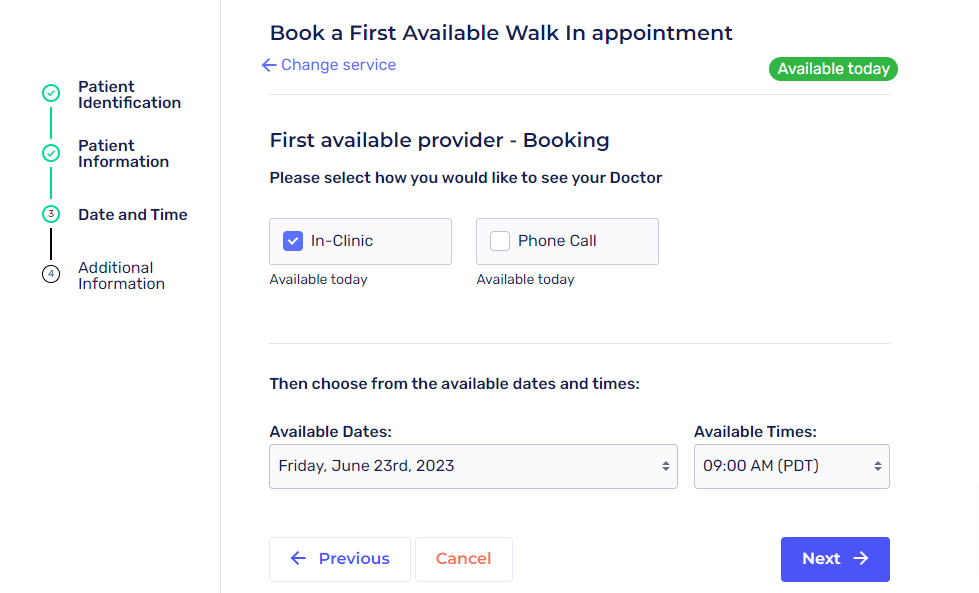
Draft a clear cancellation policy
A well-structured cancellation policy safeguards clinics from potential liabilities and sets the expectation for repercussions in case of missed appointments. Effective cancellation policies should include the following:
- A timeframe for cancellations and reschedules.
- Details on penalties, if any.
- Separate rules for unforeseen emergencies.
- A disclaimer for potential service disruptions.
Have a no-show penalty fee or deposit
No-show fees act as a deterrent against last-minute cancellations, and some patient engagement platforms, like Cortico, can implement automatic penalty fees. By enabling automatic payments, patients are notified to settle any outstanding no-show fees prior to scheduling a new appointment. However, it is important to communicate this policy clearly to patients. Along with the clinic’s terms and agreements, include this information in reminder messages so patients are aware of potential charges.
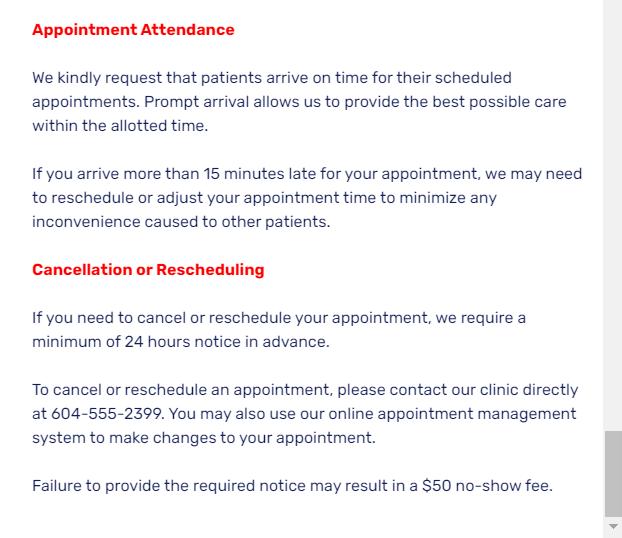
Installing pre-authorized payments
For patients with a history of late cancellations, or if your clinic offers private services, consider adding a pre-authorized payment form during the online booking process.
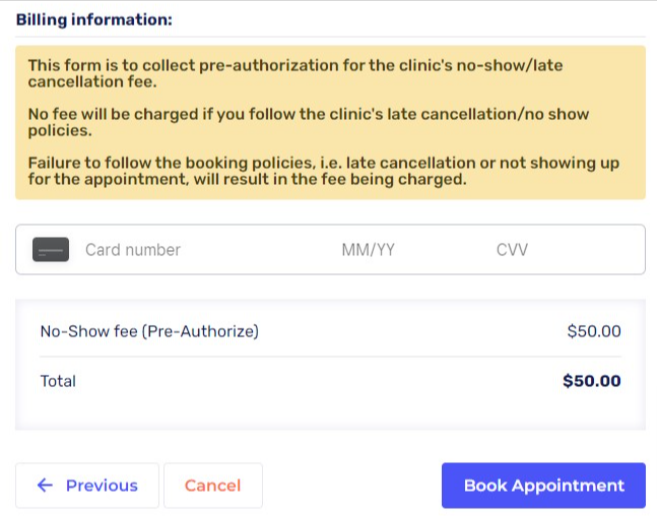
In this booking workflow, the patient is informed of the clinic’s policy regarding cancellation fees. Charges incurred will be automatic, taking the workload off clinic staff.
Incorporate an ‘Add to Calendar’ Option
Simplify the process for patients to add appointment details to their preferred digital calendar. This can enable more touch points, and additional automated reminders via platforms like Google Calendar, free-of-cost to your clinic.
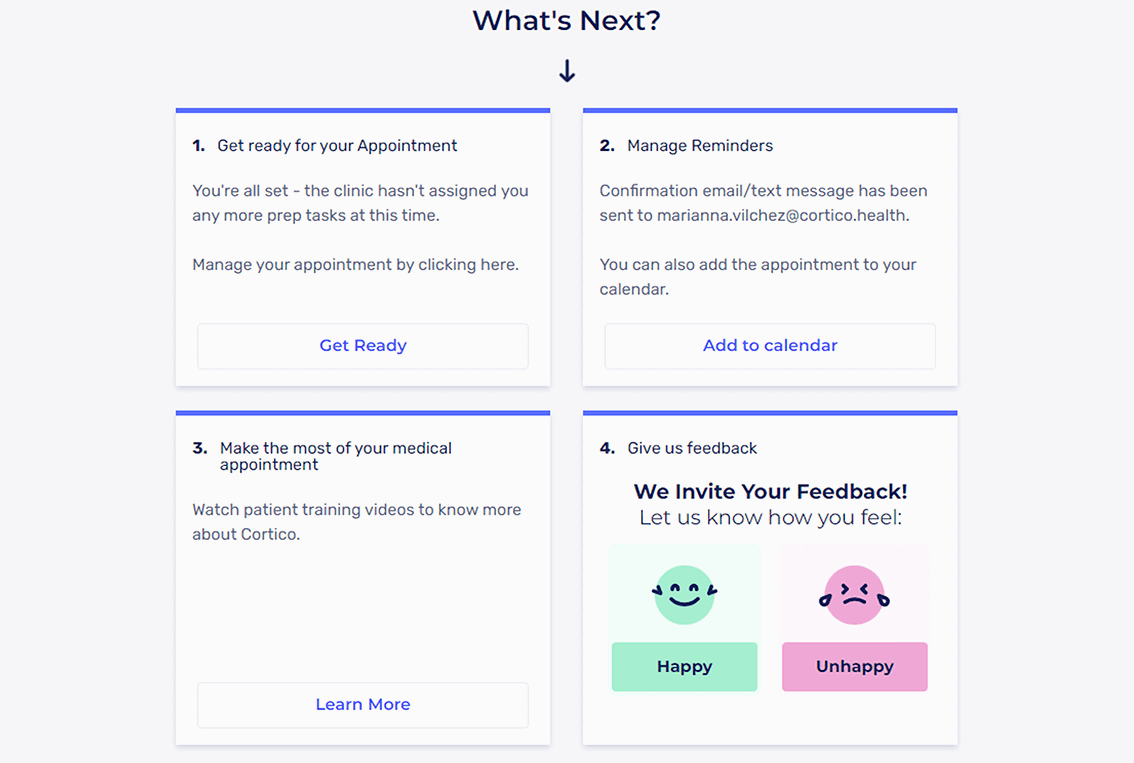
Develop healthy patient relationships to strengthen commitment
Finally, consider what fosters loyalty in your personal relationships—respect, trust, and connection. Patients who share a positive rapport with their healthcare providers are more likely to turn up for their appointments and let the clinic know in advance if they can’t make it.
Building strong relationships with patients might seem hard in a busy clinic, but here’s where technology comes in handy. With the help of automation, we can ease the stress of staff and make the patient experience better. This step towards modern healthcare also matches with the expectations of today’s patients.
Conclusion
While missed appointments are an inevitable part of healthcare, their impact can be drastically reduced with better communication, effective use of technology, and building strong ties with patients. According to one case study, clinics who implemented these measures using Cortico reduced no-shows by 70%.
Think of it like a domino effect where strengthening one area creates opportunities to strengthen others. That’s the key to running a smooth clinic!
To discuss this issue in more depth, or to get assistance in implementing no-show prevention measures at your own practice, please reach out to us at [email protected] and reference this article.
What is your clinic’s most tedious task?
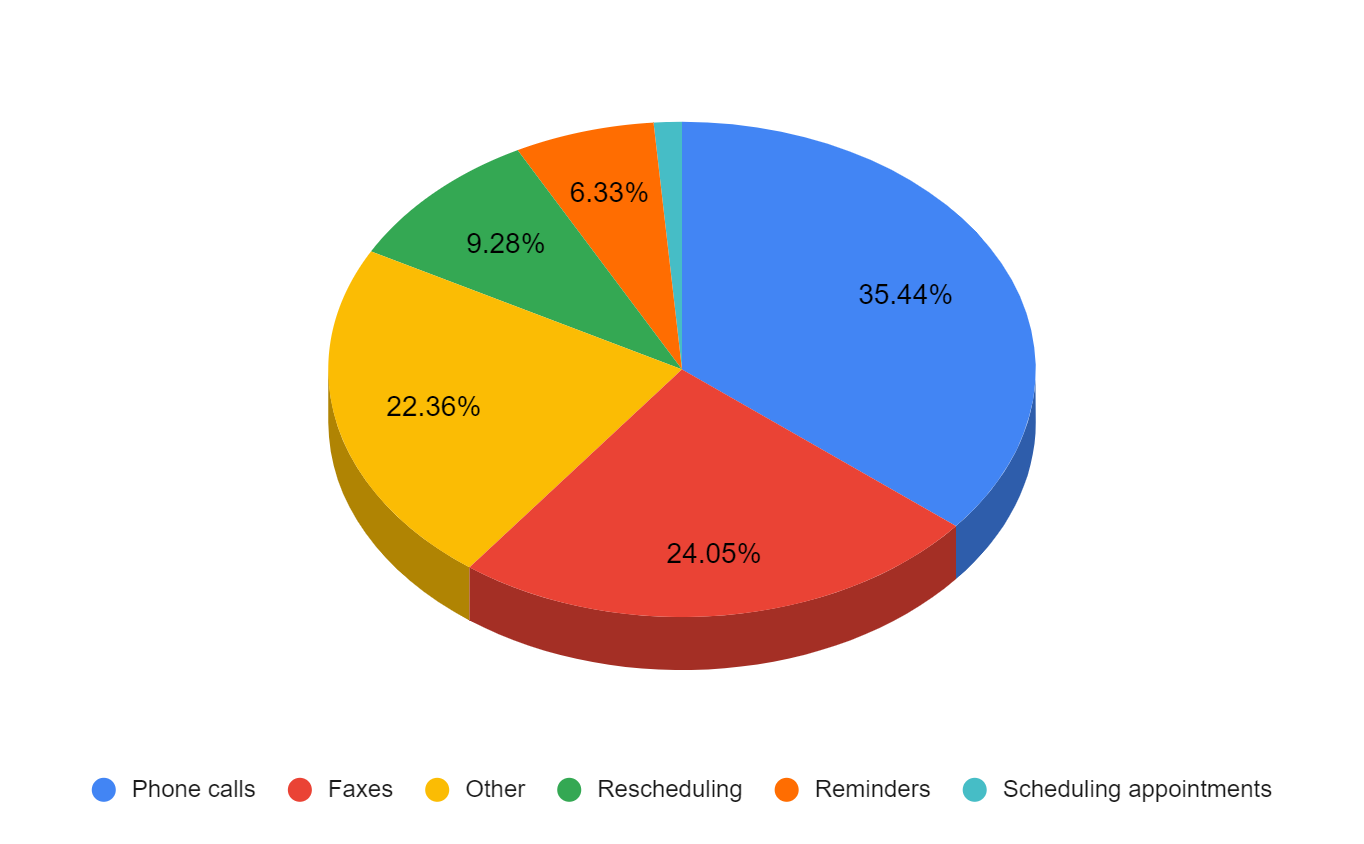
We surveyed over 250 healthcare locations across North America and 34% identified phone calls as the most tedious task at their clinic.
Want to influence the next round of data? Let us know your clinic’s biggest pain point below.








